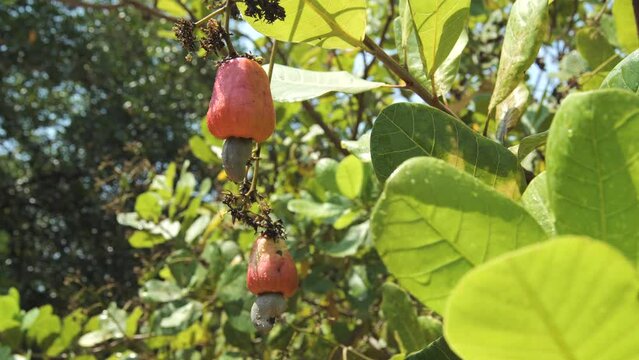Cashew nut farming has emerged as a lucrative agricultural venture in Kenya, especially in the Coastal region, where the climate and soil are well-suited for its cultivation. This article delves into the intricacies of cashew nut farming, covering everything from ecological requirements to market opportunities, and offers practical insights for aspiring farmers.
Where Cashew Nut Farming Thrives in Kenya
The primary regions for cashew nut farming in Kenya are Kilifi, Kwale, Tana River, Lamu, and parts of Taita Taveta. These areas are characterized by the warm coastal climate that supports the healthy growth of cashew trees.
Varieties of Cashew Nuts Grown in Kenya
Farmers in Kenya primarily cultivate the following varieties:
- A75/83
- A100
- A81
- A82
Each variety offers unique advantages, from high yields to resistance against pests and diseases.
Ideal Growing Conditions for Cashew Nuts
Successful cashew farming depends on meeting specific ecological requirements:
- Soil: Deep, well-drained sandy loam soils with a pH range of 4.5 to 6.5.
- Altitude: Best grown at altitudes up to 1,000 meters above sea level.
- Temperature: Optimal range is 24°C to 28°C.
- Rainfall: Requires annual rainfall of 500mm to 1,200mm.
Propagation Methods
Cashew nut propagation can be done either through seeds or grafted seedlings. Both methods have their benefits, and farmers can choose based on their resources and objectives.
Direct Seeding
This is the simplest and most common method:
- Plant three seeds in each prepared hole.
- After two months, remove weaker seedlings to allow the strongest to thrive.
Using Grafted Seedlings
Grafted seedlings are often preferred for their high-quality yields and reduced maturity period:
- Select seeds with good characteristics.
- Conduct a floatation test; plant only the seeds that sink.
- Pre-germinate seeds in beds before transplanting to potting bags when the tap root is 2-3 cm long.
- Graft seedlings 3-4 weeks after transplanting, once they develop at least two functional leaves.
Land Preparation and Planting
Proper land preparation is crucial for healthy cashew trees:
- Land Preparation: Plough thoroughly and prepare planting holes (60cm x 60cm) at least 1-2 months before planting.
- Spacing: Maintain a spacing of 12m x 12m for optimal growth and management.
- Fertilization: Mix topsoil with 100g of DAP fertilizer and two buckets of well-decomposed farmyard manure per hole.
- Planting: Place the seedling at the center of the hole, cover with soil, and mulch.
- Watering: Water the seedlings 3-4 times a week until they are well established.
- Intercropping: Plant short-term crops such as vegetables to maximize land use and generate additional income.
Essential Farm Practices
To ensure optimal growth and yield, regular farm management practices are necessary:
- Removal of Suckers: Eliminate shoots from rootstocks to prevent competition for nutrients.
- Formative Pruning: Shape trees to grow upright within the first five years, achieving a height of 1-1.5 meters.
- Shading: Protect seedlings from harsh conditions, especially during drought periods.
Managing Pests and Diseases
Common Pests
- Mealybugs
- Weevils
- Caterpillars
- Leaf miners
- Cashew nut bugs
- Stem borers
- Thrips
Use recommended insecticides to control these pests effectively.
Common Diseases
- Anthracnose: Treated with copper-based fungicides.
- Powdery Mildew: Managed through regular fungicide application.
- Dieback: Addressed with appropriate chemical treatments.
Harvesting and Yield
The time to maturity varies by propagation method:
- Grafted Seedlings: Begin fruiting within two years.
- Directly Sown Seeds: Fruiting starts after 3-4 years.
A well-maintained hectare of cashew trees can yield over 2,000 kilograms of unshelled nuts annually. Individual trees produce between 10 and 100 kilograms of nuts.
The Market for Cashew Nuts in Kenya
Kenyan cashew nuts cater to both local and international markets. Domestically, major buyers include processors that extract oil and manufacture products from cashew nuts. The export market is equally promising, with Kenya’s cashews attracting high demand globally.
Key Processors and Exporters
- Eureka Nuts EPZ Ltd
- Farmgate East Africa
- Cashewland Ltd
- Alba Company Ltd
- Wondernuts Ltd
Economic Potential of Cashew Farming
Cashew nut farming offers farmers a sustainable income source. By diversifying their crop portfolio and employing modern farming techniques, small-scale farmers can transition to commercial-scale production, tapping into Kenya’s growing agricultural export sector.
Government and Stakeholder Support
The Kenyan government, alongside various agricultural stakeholders, continues to promote cashew farming through subsidies, training programs, and improved market access. Farmers can also benefit from loans and grants aimed at boosting agribusiness.
Challenges Facing Cashew Nut Farmers
Despite its potential, cashew nut farming in Kenya faces several challenges:
- Pests and Diseases: Regular outbreaks can significantly reduce yields.
- Climate Change: Irregular rainfall patterns affect production.
- Market Access: Limited infrastructure in rural areas makes it difficult for farmers to reach buyers.
- Limited Awareness: Many farmers lack knowledge of best practices and high-yield varieties.
The Future of Cashew Nut Farming in Kenya
With increased investment in agriculture and a focus on value addition, cashew nut farming is poised for growth. The introduction of modern technologies, combined with government and private sector support, will enable farmers to enhance productivity and profitability.
Cashew nut farming is not only a profitable venture but also a step towards promoting sustainable agriculture in Kenya. By adopting best practices and leveraging available resources, farmers can unlock the full potential of this cash crop.





